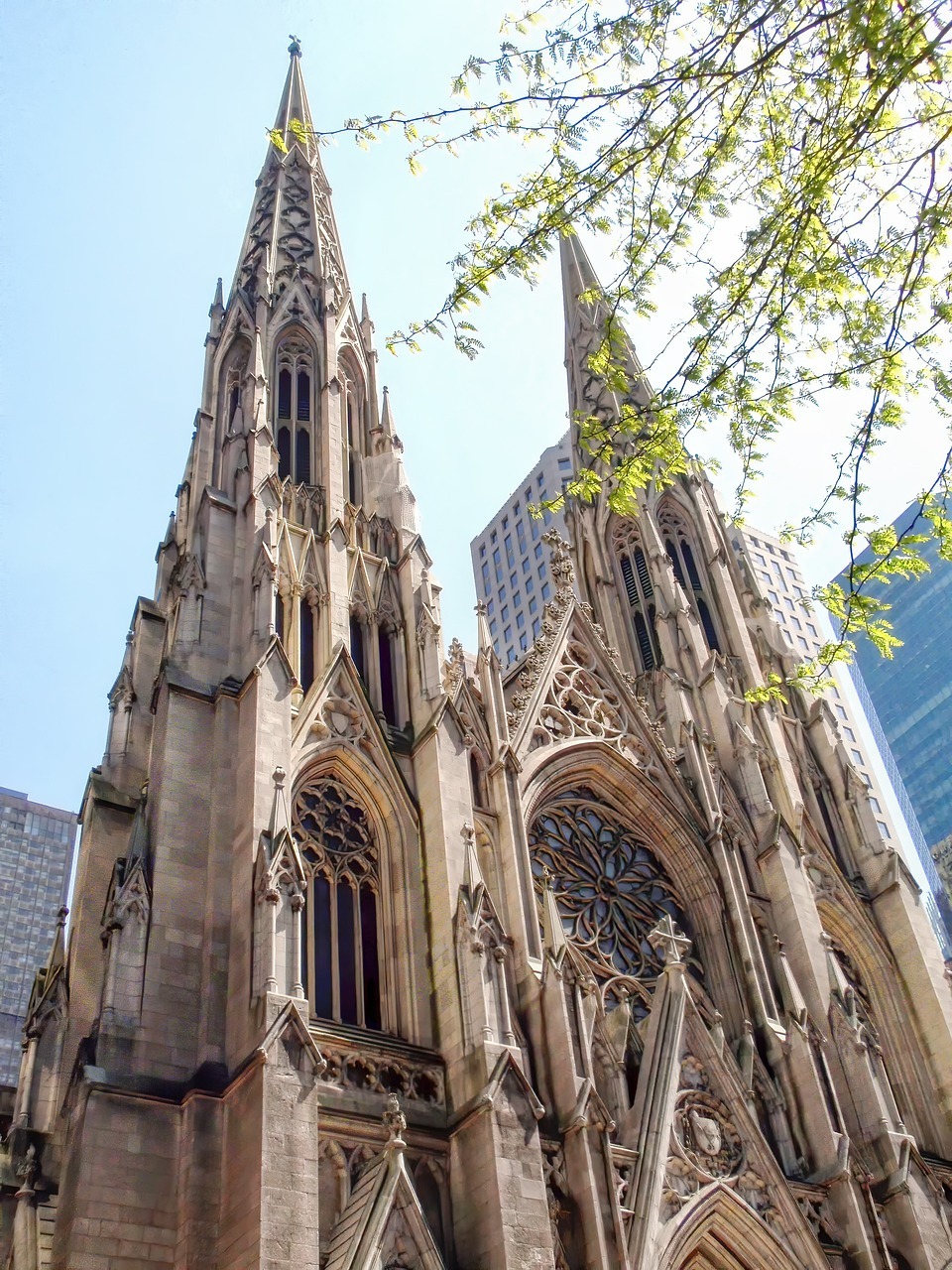Amidst the modern towering skyscrapers in Midtown Manhattan lies the St. Patrick’s Cathedral, the largest Neo-Gothic-designed Catholic cathedral in North America. The striking architecture serves as the seat of New York’s Archbishop and as a parish church, occupying an entire city block, bounded by 50th and 51st street, and Fifth and Madison avenues. With its origin tracing to the year 1853, the cathedral is one of the most important landmarks in New York city’s history.
Today, it is an internationally celebrated destination, enticing millions of visitors each year. If you’re going to be one of them or still aren’t aware of the story behind the so-called “America’s Parish Church”, let’s go back in time and discover the history of iconic St. Patrick’s Cathedral.
Planning
Pope Pius VII founded the Diocese of New York in 1808. By 1815, there were 15,000 Catholics in the diocese, which grew rapidly to 200,000 by the early 1840s. With the increasing population of Catholics, more dioceses were added in the state, while the Diocese of New York City was made into an Archdiocese in 1850. The delegation of Bishop John Joseph Hughes to the archbishop level soon followed afterward.
With the unprecedented growth of the Archdiocese of New York, Hughes declared his intention in 1953 to replace the original St. Patrick’s Cathedral in Mulberry Street, what is known today as Lower Manhattan. A large cathedral was immensely needed to house the growing number of Catholics, brought by the blooming German and Irish immigrants. Not only would it fit the Roman Catholic populace, but it would serve as an insignia of the religion’s flourishing importance in the city.
Hughes decided to build the grandiose cathedral at Fifth Avenue, which was pretty rural at that time. It was surrounded by gardens and rocks, or more typically like farmland. Eyebrows were raised as the site was far north where the main population of the city was in. Nevertheless, Hughes believed that the location would soon blossom and be a populous metropolitan area.
Despite criticisms and being dubbed as the archbishop’s folly, the project pressed on in 1853, with Hughes announcing firm Renwick & Rodrigue to spearhead the cathedral’s design and construction. James Renwick Jr. spent three years in Europe finding inspiration for the new Cathedral.
The firm initially planned to build a cathedral bigger than the current one, but the archbishop requested to decrease the dimension in 1857. Eventually, plans for the cathedral were finalized in 1858. Fundraisings were made for the structure, with the first construction contracts released in June of the same year. Meanwhile, you can also open the link if you want to play on the safest online slots.
Construction
On August 15, 1858, the cathedral’s cornerstone was set, attended by 100,000 spectators. Two months later, the firm released the cathedral’s cost estimates in four materials: granite, olive freestone, brown freestone, and white marble. Though it was the most expensive, Renwick suggested using the latter, emphasizing its elegance and durability. Work began but was paused due to the exhaustion of funds. Its resumption was even delayed further with the start of the American Civil War in 1861.
In January 1864, Hughes died before the work on the cathedral resumed in 1865. John McCloskey succeeded him as the archbishop who devised new plans on the funding of the structures. Much of the money spent came from the parishioners of the church, many of whom were poor immigrants but still pledged to provide $100,000 annually until the cathedral was complete. Such an act was acknowledged by a newspaper, citing that the cathedral was being built mostly from the contributions of the poor and not solely from excessive wealth.
By mid-1866, the cathedral’s walls had been built to 6.1 meters (20 feet)above ground, and in 1870, already at 16 meters (54 feet). Meanwhile, in the same year, the Fifth Avenue entrance measuring 21 meters (70 feet) tall and the transept were already finished.
In 1874, Emigrant Industrial Saving Banks lent $300,000 to aid the cathedral’s construction. The following year, all the walls were almost completed while the roof had already been covered with slate. Another $100,000 was borrowed from the bank in 1876. Scaffoldings were installed later in the year for the decoration and furnishing of the cathedral’s interior.
Opening, Construction, and Preservation
After two decades of grueling construction, the new St. Patrick’s Cathedral was completed in 1878 and formally opened and dedicated on May 25, 1879. Six archbishops and thirty-five were present during the dedication. The event received positive remarks from the media, with one even dubbing the cathedral as the most exemplary church structure in America.
Further projects and constructions were made after the cathedral’s official completion. A rectory was completed in May 1884, while spires were erected in October 1888. A Lady Chapel began to be built in 1901. Its first mass took place in 1906, but the chapel was only entirely completed in 1908. Since then, minor and major renovations were made to preserve the cathedral. And if you are looking for the best online casino, visit the given link.
St. Patrick’s Cathedral Today
St. Patrick’s Cathedral now ranks among the most visually stunning cathedrals in the world. Aside from its magnificent Neo-Gothic architecture, it’s also famed for its spectacular bells, altars, stained glass panels, titanic bronze doors, and canopy. Yet, apart from its beauty, it’s an awe-inspiring physical affirmation of the rise of religious tolerance and freedom in the city, as well as a striking symbol of historical heritage that mirrors NYC itself.
What was once regarded as folly, the cathedral endured criticisms, the bloodshed of the war, funding woes, arduous construction, and the length of time to become one of New York’s most cherished architectural monuments.

